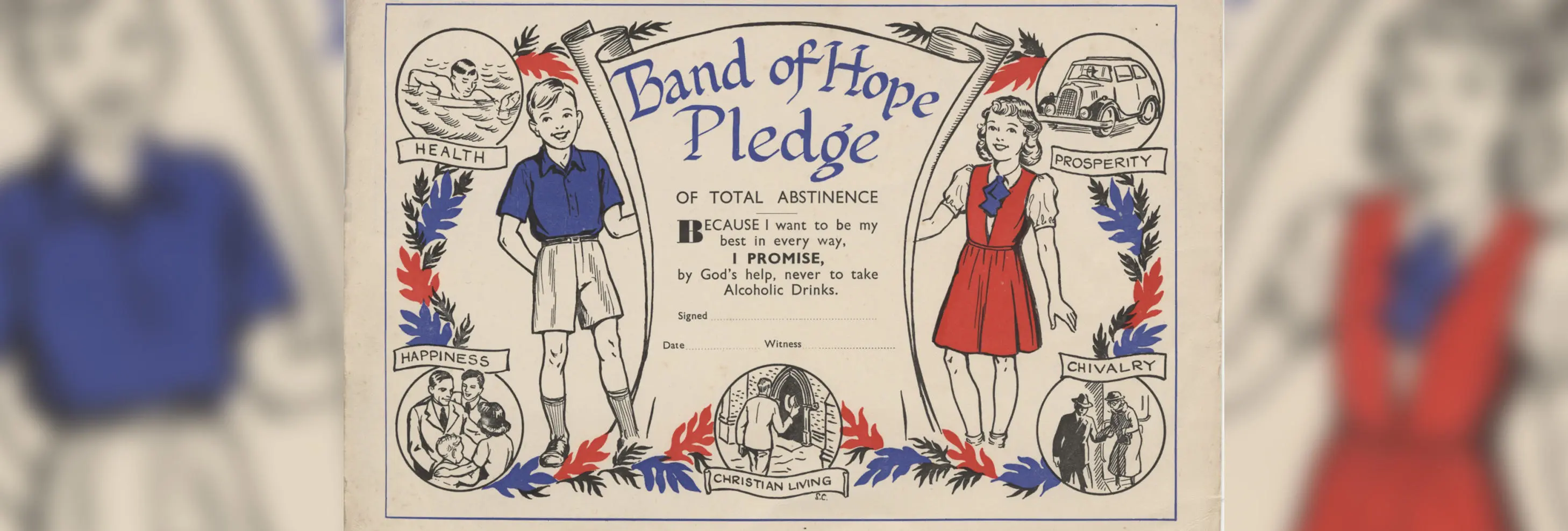Victorian Lancastrians didn’t need a drink to throw a good party…
As proud Lancastrians raise a glass to the Red Rose County on the 27 November to celebrate Lancashire Day, they’ll be spoilt for choice of where to go and what to drink.
Modern day Lancashire is home to hundreds of breweries and distilleries, with craft ale houses and gin bars popping up in every town, but this wasn’t always the case. In the last two centuries, a drinks menu might feature dandelion and burdock, sarsaparilla and cream soda in an attempt to avoid the dangers of “the demon drink,” which could be seen on every street in Lancashire according to local activists. In fact, Blackburn was described as “the most drunken town in England” by a reporter from the Daily Telegraph in 1830, who encountered men, women, and children “in a disgusting state of intoxication.”
The desperate state of affairs led to the establishment of the temperance movement in 1832 when Preston cheesemonger Joseph Livesey, along with six other local men, announced their signing of the total abstinence pledge at a public meeting in the Cockpit, in Preston. This was viewed as the beginning of teetotalism in the UK and promoted moderation or complete abstinence of alcohol consumption to improve health and wellbeing amongst the working classes.
"Lancashire, in particular Preston which is often described as ‘the Jerusalem of Teetotalism,’ is considered the birthplace of the temperance movement."
— Senior Research Fellow in History at UCLan and temperance expert Dr Annemarie McAllister
Senior Research Fellow in History at UCLan Dr Annemarie McAllister is a temperance expert. She said: “Lancashire, in particular Preston which is often described as ‘the Jerusalem of Teetotalism,’ is considered the birthplace of the temperance movement. The word ‘teetotal’ was invented in 1833 in Preston by temperance advocate Dicky Turner, not because he had a stammer as it is commonly believed, but as a form of emphasis. To show his enthusiasm he repeated the initial letter to declare himself ‘Tee-Total.
“A big part of Lancashire’s rich cultural heritage can be traced back to the temperance movement and the pledges members signed.
Teetotalism didn’t mean boring, though, and the movement prompted a new culture in towns and villages around the county of temperance hotels, coffee and cocoa taverns, and herbal drinks bars. There is still one in Rawtenstall today called Mr Fitzpatrick’s.
"A big part of Lancashire’s rich cultural heritage can be traced back to the temperance movement and the pledges members signed."
— Senior Research Fellow in History at UCLan and temperance expert Dr Annemarie McAllister
Societies were created for members to come together and not only promote the movement, but also to have fun. The Band of Hope, which had its largest regional Union in Lancashire and Cheshire, offered children the opportunity to take part in excursions, processions, concerts, competitions and gain certificates for their work. There were also temperance football clubs, cycling groups and reading rooms for adults to enjoy.
Annemarie added: “As well as celebrations such as the crowning of temperance queens every May, huge contingents from temperance groups walked as part of the Guild events.”
"As well as celebrations such as the crowning of temperance queens every May, huge contingents from temperance groups walked as part of the Guild events."
— Senior Research Fellow in History at UCLan and temperance expert Dr Annemarie McAllister
The temperance movement may have seen a steady decline in the 20th century but its legacy lives on, indeed the Band of Hope still exists today but as Hope UK, a drug education charity for young people. Even the well-known popular soft drink Vimto can thank temperance for its creation when in 1908, ‘Vim Tonic’ was created as an alternative and healthy alternative to alcohol.
We Lancastrians have always known has to party and our penchant for pomp and pageantry goes back a long way. Through Guild processions dating back centuries, the parades and songs that were so popular with the temperance movement or the modern day carnivals and festivals all over the county. So however you choose to celebrate Lancashire Day, whether it’s with a G&T, a pint of ale or a dandelion and burdock, you can be confident that pride in the Red Rose county is as strong as it ever was.
Find out more by visiting here or follow Dr Annemarie McAllister on Twitter @demondrink
UCLan is home to the largest archive of temperance history, the Livesey Collection, and has welcomed visitors from around the world to work on the material it holds.





